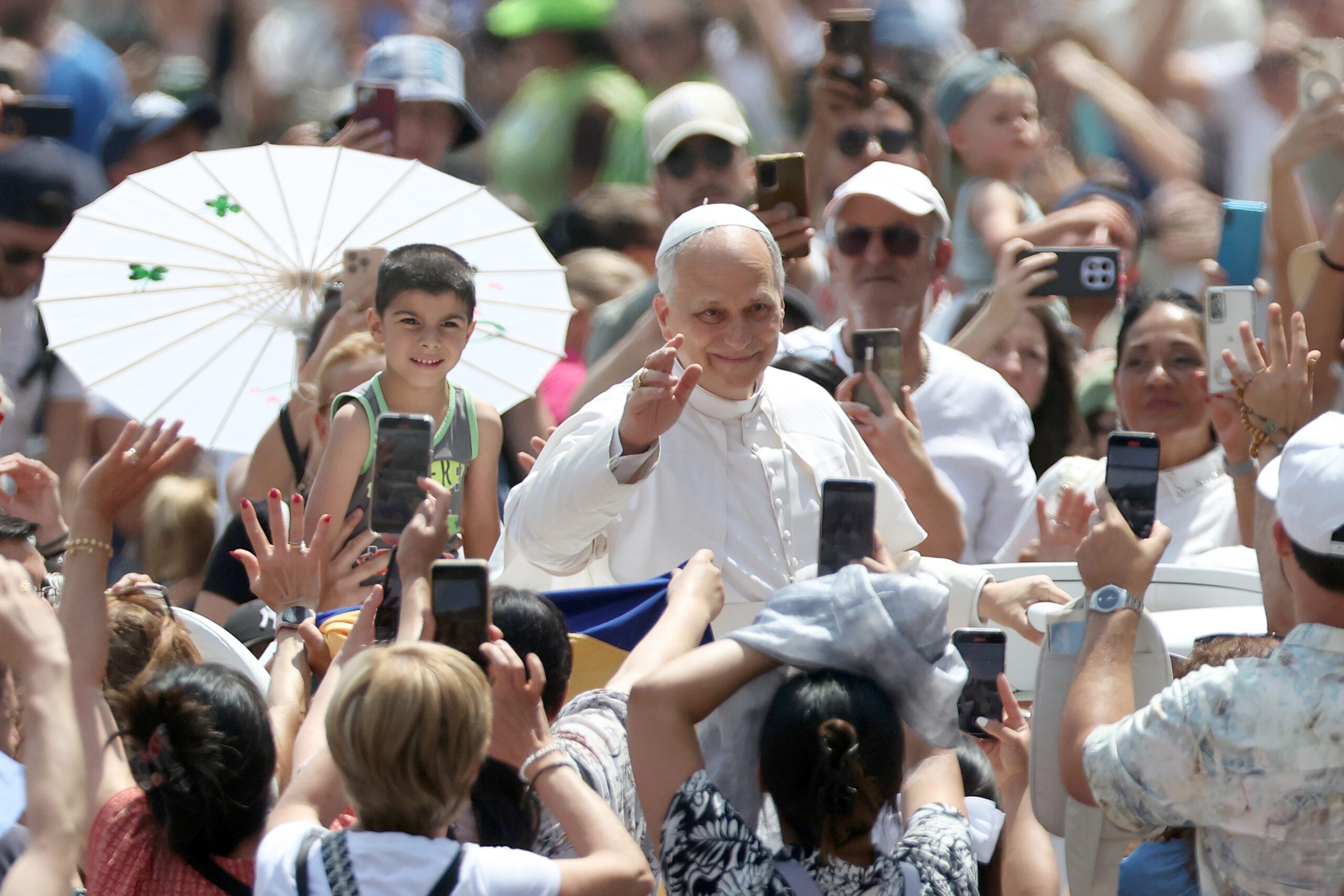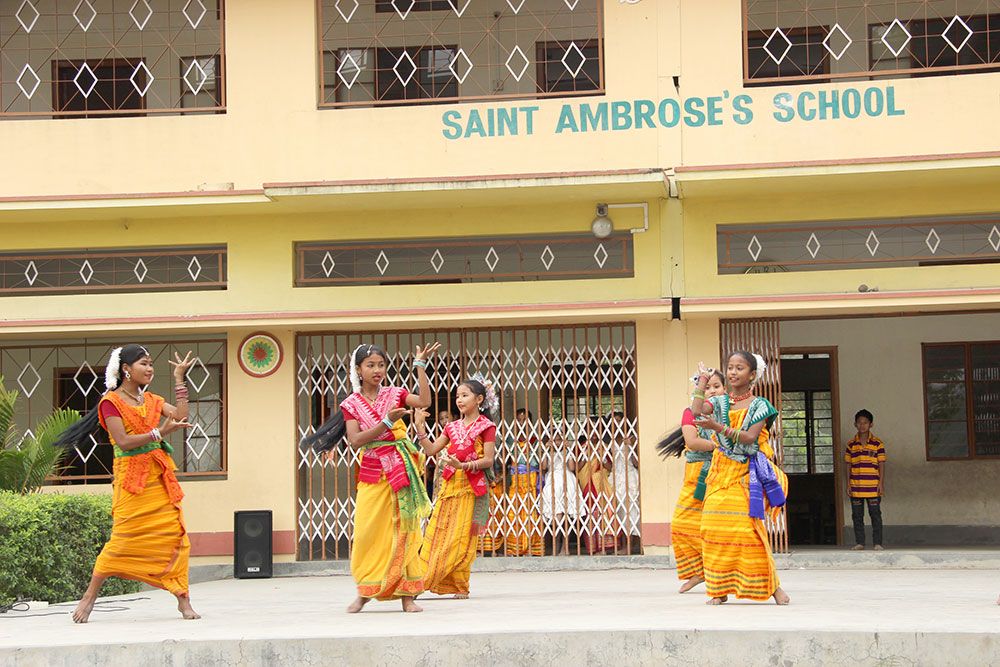In 1054, the mid-Eastern Christian churches split from the Roman Catholic Church, and all efforts in the last 10 centuries to reconcile them have failed. Differences in culture, language, social traditions, politics, and even human ambition have been the factors of this continued alienation and suspicion. And yet, both sides believe in the same God and receive the same sacraments. A number of them have rejoined the Roman Catholic Church, but one remains aloof and refuses to accept the primacy of the Pope in Rome.
St. Peter, the Prince of the Apostles, was martyred in Rome, the Eternal City and capital of the ancient Roman Empire. The bishops who succeeded him there inherited his primacy and supreme authority over all Christian churches, and Rome is now the head and center of Christianity. The other mid-Eastern churches can also claim apostolic origins, but do not enjoy the same privilege. Antioch traces its beginnings to St. Peter, but he did not die there. Alexandria in Egypt, a Jewish center of culture and learning, was the second imperial city as big as Rome. Tradition says that St. Mark, St. Peter’s close disciple, was the founder of its Christian Church. St. James the Apostle headed Jerusalem, the cradle of Christianity, where he was martyred. Constantinople, founded in 324 by Constantine the Great as the seat of his new empire, could not claim the same apostolic origin.
Christianity was persecuted until Emperor Constantine the Great granted it legal existence in 313 A. D. For strategic reasons, he abandoned Rome and, in 324, built a new seat of his empire in Byzantium, renamed Constantinople (“Constantini polis,” or Constantine’s City). The new imperial capital soon eclipsed Rome in importance, grandeur, and culture. Because Christianity flourished under imperial protection, it seemed a matter of course that the Emperor would be considered head of the Christian community, and he was expected to promote the well-being of both the Empire and the Church. And Constantine himself believed that religious unity and uniformity of belief would consolidate imperial unity, and he banned everything that threatened to disrupt it.
The first councils
Sincere Christian leaders were perplexed over many Christian mysteries, especially the Trinity. Arius (+336), a priest in Alexandria, could not rationally explain how Jesus could also be divine. If He was, how could there be only one God? He concluded that Jesus could not be divine, but only a mere creature, lower than the Father. To worship Jesus was idolatry. More importantly, His death on the cross was useless and could not save the world. In this way, Arius believed he was preserving the doctrine of only one supreme God intact.
To settle the dispute, Constantine convoked the first ecumenical council in Nicaea in 325, which unequivocally condemned Arius and his teachings. It drew up a succinct summary of the articles of Christian faith, we now know as the Nicene Creed. Not all accepted the condemnation, and Constantine imposed his imperial authority to force everyone to accept the Nicene Creed and profess that Jesus was divine, co-equal to the Father. This and many other factors to Christianity won him the gratitude of the Christian believers who honored him as “isapostolos” (equal to the Apostles).
Farther west in Spain and France, two bishops of Toledo also wanted to preserve the doctrine of only one supreme God. It met the same difficulty: how to reconcile the unicity of the Christian God with the Trinity. The two bishops taught what is known as “adoptionism,” that Jesus was adopted by the Father and not truly divine. To settle the problem, Charlemagne convened a council in Frankfurt in 794. Besides condemning the heresy, it also discussed the “processio Sancti Spiritus,” or how the Holy Spirit, the Third Person of the Blessed Trinity, came to be. One of the Carolongian theologians used, for the first time according to historians, the formula “qui ex Patre Filioque procedit” (who proceeded from the Father and the Son) in order to preserve the consubstantiality of the three Divine Persons. In the East, in the second ecumenical council of Constantinople, the same text on the Holy Spirit was also used. And it added the same text used during the deliberations of the council of Toledo that had already condemned Arianism. The Easterners objected and insisted on using their traditional text, “qui ex Patre et Filio procedit” (who proceeded from the Father and from the Son). To them, it was not a mere question of words, for they wanted to preserve the equality of all three Persons of the Blessed Trinity.
The first schism
In those early centuries when Christianity was a minority religion in the midst of a pagan world, imperial power provided a protective arm for the Church. Some believed that the Christian empire was the “shadow” or “copy” of the heavenly kingdom. Precisely, imperial authority had convened the early Church councils to stamp out heresy and all separatist tendencies.
Meantime, the Teutonic races broke Western Europe apart, but they skirted the eastern empire centered in Constantinople. This allowed the East to develop into a wealthier, politically stronger, and more cultured society heavily imbued with Hellenism. But Hellenic anthropomorphic religion bothered the Eastern Christians, who soon fell into the extremist attitude that veneration of religious statues was an aberration. Their zeal expressed itself in the campaign we call “iconoclasm” (from the Greek “eikon” = image, and “klao” = to break). The iconoclasts went around smashing sacred images and persecuting those who venerated them. Supported by Emperors Leo III, the Isaurian (717-741), Constantine V Kopronimos (741-775), and Leo IV (775-789), the movement gained strength.
Though condemned by the ecumenical councils at Nicaea II (787) and Constantinople (843), it paved the way for the later schism between Rome and Constantinople in 1045. Three issues provoked the break: the formula “filioque,” iconoclasm, and the primacy of the Bishop of Rome. Three persons figured prominently in these events: Photius (+896), Michael Cerulaeus (+1058), and the Emperor, who actively intervened with his power.
Photius was Patriarch of Constantinople twice, in 858-867 and 878-896. A layman and a scholar, he was, by imperial fiat, ordained Bishop (or Patriarch) of Constantinople “per saltum,” or without passing through the regular stages of priestly formation and ordination. His predecessor, a conservative, had been forced to abdicate, and Photius took his place. He wrote to the Pope, seeking to legitimize his position, alleging he was named to fill the vacant episcopal seat. The Pope disapproved the consecration of a layman as a bishop, and sent legates to look into the religious situation in Constantinople. The papal emissaries excommunicated Photius, his predecessor was reinstated, but the Emperor complained against the “papal interference” in the church affairs in his realm. Against Latin encroachment, in 867, he convoked a synod which condemned the Pope who, providentially, died before the synod concluded.
Photius was soon deposed by a usurper to the throne, who reinstated Ignatius, the former patriarch. Invited to the fourth ecumenical council at Constantinople, the Pope sent legates with instructions to ask the acceptance of the Roman synodal decrees. The council also condemned Photius. But Ignatius had already died when the papal legates arrived, and Photius was again reinstated. On instructions, the legates informed Photius he would be recognized by the Pope if he expressed regret over his past actuations. Claiming his election was to fill a vacancy, Photius refused. Zealots, not him, were to blame.
The council had hope to reunite the two Churches, but the papal legates believed the Pope had been misinformed. In the Greek translation of their written instructions, passages referring to the purpose of the council and the lines supporting the Roman primacy were significantly omitted. Initially, the West did not recognize the council. During the famous investiture controversies, Rome cited Canon 22 of its deliberations, which banned laymen from naming or appointing bishops. Since then, the Canonists have included the fourth council of Constantinople in the list of ecumenical councils. Traditional history says that Photius had been the origin of the schism and had refused to recognize the Roman primacy. Modern research now discards this view, for Photius died reconciled to Rome.
The story of Cerulaeus is different. He was named Patriarch of Constantinople in 1042 or 1043. His hostility to western Christianity won him popular following. As patriarch, he closed the Latin churches, desecrated sacred images, even the sacred species. Because the Normans were threatening southern Italy, over which the Emperor claimed jurisdiction, he asked for papal support. The latter accordingly sent legates to negotiate a treaty with Constantinople, and also try to reclaim, for Rome, the three southern zones of Italy (Ylliricum, Calabria, and Sicily) and recognition of Roman primacy.
The legates followed their instructions and demanded that Cerulaeus repudiate his writings against his literary opponent (who favored the West), and anathematized those who opposed the primacy of Rome. The Emperor refused the conditions, Patriarch Cerulaeus remained obdurate against “heretical Rome,” and dubbed the papal legates as “impostors.”
Nonetheless, on 16 July 1054, the decree excommunicating the Eastern Christians was solemnly placed on the high altar of Hagia Sophia, the impressive church Constantine had built. The Easterners rose in angry opposition and the legates had to flee for their lives. The Emperor yielded to the demands of Cerulaeus. On 24 July 1054, a synod condemned the papal legates, the formula “filioque” and approved clerical marriage. The schism was complete.
The primacy of Rome
Incomplete records have hampered detailed research into these events. The synod was meant to bridge differences, but it failed. Disciplinary differences, like the use of unleavened bread for the Holy Eucharist in the Latin rite, could have been easily resolved. The real problem was the primacy of the Pope, the Bishop of Rome. In 1438, the council of Ferrara-Florence in Italy was held. It discussed the traditional issues that separated the Eastern from the Western Church: filioque, unleavened bread, purgatory (hardly taught in the East), beatific vision before the Last Judgment, and the primacy of Rome over all Christian Churches. Constantinople was accorded a secondary position after Rome. Other explosive issues, like the union between the Greek and Latin rites, were not touched.
In due time, the Byzantine monks and the lower clergy refused to accept the conciliar decrees of Ferrara-Florence when they were proclaimed at Hagia Sophia on 12 December 1452. The Pope, however, hesitated to impose them. Those who, at the council, had signified their willingness to reunite with Rome retracted their signatures. Then, on 29 May 1453, Constantinople fell to the advancing Turks.
Efforts for unity have continued until our day. Pope Paul VI (1963-1978) made it to the international headlines for his efforts for unity. Three times in 1964, just a year after his election, he met with the Ecumenical Patriarch Athenagoras of Constantinople. During the Holy Eucharist he presided over towards the end of second Vatican Council, he issued a joint statement lifting the mutual anathemas pronounced by the two Churches. He repeated his hope in an address before the Secretariat for Promoting Christian Unity on April 9, 1967. In October that year, Patriarch Athenagoras visited Rome, the first by an ecumenical patriarch of the Eastern Church. He addressed the pope as “Bishop of Rome, bearer of apostolic grace” and “the first in honor and order in the living body of the Christian Churches scattered throughout the world.”
True to his prayer, Pope Paul VI included, in his last will, his desire that the work of drawing closer to our “separated brethren should continue with greater understanding, but without deviating from the true Catholic understanding.”














